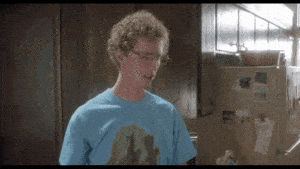There tends to be a big difference between professional and amateur athletes when it comes to training. The natural intuition of amateur athletes is to push as hard as they can, test the limits of their potential, maximize what they’re capable of, and grind until they can’t go anymore. No pain no gain mentality.
However, the training schedule of professional athletes—especially once a good coach enters the picture—is typically calmer.

Researchers recently looked at the training schedule of a dozen Olympic-level cross-country skiers who are some of the fittest athletes in the world.
Over the course of a year, the athletes trained an average of almost three hours a day. Each hour was broken up into buckets: High intensity (huffing and puffing), medium intensity (heavy breathing), and low intensity (can still carry on a conversation).
After a year, the training schedule broke down like this:
• 88.7% of training hours were light intensity
• 6.4% were medium intensity
• 4.8% were high intensity
The overwhelming majority of the skiers’ time was spent barely pushing themselves. You’ll also find the same training percentage breakdown when looking at professional runners or cyclists or swimmers.
While these athletes obviously don’t race at a leisurely pace, they’ve found the way to optimize for peak performance is to favor longevity over intensity, which results in fewer injuries and mental burnout.

Stephen Seiler, an exercise physiologist, explained:
[Professional endurance athletes] go for a long time at a low intensity where they can recover, and repeat it day after day. And that’s what really brings success. For the highest levels to be attainable over time, the training process has to be sustainable. At higher levels of intensity, chronic levels of stress leads to burnout and stagnation.
This is exactly how good investing works too.
As a financial advisor, I get quite a few questions along the lines of, “What do you think about investing in [insert trendy investment]?”
The commonality with all of these types of questions is they all come after the asset has skyrocketed recently and they stem from a desire to hop on the trend and make a quick buck.
Just in the last few years alone, there have been some very public examples of trendy assets like GameStop, AMC, SPACs, cryptocurrencies, NFTs, ARKK, etc. that made a few people who got in early rich but ended poorly for many.
Even though we have a huge collection of data showing that fad-chasing investment behavior ends poorly for most investors, it still keeps happening because FOMO is a real thing.
A consistent, systematic approach to investing sounds good in a vacuum, but we don’t live in a vacuum. We’ve all heard of someone who made tons of money in crypto, or Tesla, or whatever, and it’s so tempting to try to replicate what they did. There’s always the voice in the back of our minds that whispers, “What if Bitcoin does bounce back and gain 200% in a year?”

The problem with this investment strategy is even if Bitcoin does bounce back and you double your money in a few short months, you then have to answer the question of what comes next. The thing with short-term trading is it can work for a little while. You experience a small win, and you take on more risk. But one day, after you lose sight of just how much you are risking, the market moves against you. Volatility works both ways. That easy money on the way up? Those 200% gains? It can all come crashing down just as quickly.
You chase the wrong trend at the wrong time, and it can blow up in your face

The temptation to exploit every drop of opportunity leads many people to push relentlessly for more, more, more. They only discover the limits of what’s possible when they’ve gone too far and when the momentum of decline is often unstoppable.
These investors are the equivalent of an athlete who tries to push 110% in every training session and gets burnt out.
For a period of time, they may have some crazy success but over time they’ll be lapped by the person who casually jogs each day, who can sustain his training and build a body that can adapt and recover for the next day.
The most important investing question is not, “What are the highest returns I can earn?”
It’s, “What are the best returns I can sustain for the longest period of time?”
It’s counterintuitive, but you will likely maximize investment gains over your lifetime if you go out of your way to not maximize annual returns, instead focusing on merely good returns that you can sustain for as long as possible.
Thanks for reading!

